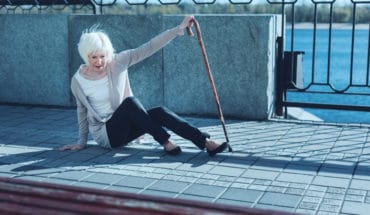Dog walking boosts levels of physical activity in old people and can ward off decline in later life, according to recent research published in the Journal of Epidemiology and Community Health.
The researchers from the University of East Anglia (UEA) and Centre for Diet and Activity Research (CEDAR) at the University of Cambridge found that owning or walking a dog was one of the most effective ways to beat the usual decline in later-life activity, even combatting the effects of bad weather.
The researchers from the University of East Anglia (UEA) and Centre for Diet and Activity Research (CEDAR) at the University of Cambridge found that owning or walking a dog was one of the most effective ways to beat the usual decline in later-life activity, even combatting the effects of bad weather.
They analysed data from the EPIC Norfolk cohort study, which is tracking the health and wellbeing of thousands of residents of the English county of Norfolk.
Dog owners were sedentary for 30 minutes less per day, on average.
More than 3000 older-adults participating in the study were asked if they owned a dog and if they walked one. They also wore an accelerometer, a small electronic device that constantly measured their physical activity level over a seven-day period.
As bad weather and short days are known to be one of the biggest barriers to staying active outdoors, the researchers linked this data to the weather conditions experienced and sunrise and sunset times on each day of the study.
Lead author of the paper, Dr Yu-Tzu Wu from University of Cambridge, said “We know that physical activity levels decline as we age, but we’re less sure about the most effective things we can do to help people maintain their activity as they get older.
“We found that dog walkers were much more physically active and spent less time sitting overall. We expected this, but when we looked at how the amount of physical activity participants undertook each day varied by weather conditions, we were really surprised at the size of the differences between those who walked dogs and the rest of the study participants.”
The team found that on shorter days and those that were colder and wetter, all participants tended to be less physically active and spent more time sitting. Yet dog walkers were much less impacted by these poor conditions.
Project lead Prof Andy Jones from UEA‘s Norwich School of Medicine said: “We were amazed to find that dog walkers were on average more physically active and spent less time sitting on the coldest, wettest, and darkest days than non-dog owners were on long, sunny, and warm summer days. The size of the difference we observed between these groups was much larger than we typically find for interventions such as group physical activity sessions that are often used to help people remain active.”
The researchers caution against recommending everyone owns a dog, as not everyone is able to look after a pet, but they suggest these findings point to new directions for programmes to support activity.
Prof Jones said: “Physical activity interventions typically try and support people to be active by focussing on the benefits to themselves, but dog walking is also driven by the needs of the animal. Being driven by something other than our own needs might be a really potent motivator and we need to find ways of tapping into it when designing exercise interventions in the future.”
‘Dog ownership supports the maintenance of physical activity during poor weather in older English adults: cross-sectional results from the EPIC Norfolk cohort’ is published in the Journal of Epidemiology and Community Health.
- Gut microbiome could delay onset of type 1 diabetes - 3rd April 2025
- The da Vinci 5 Robot Is Set To Transform Bariatric Care: - 31st March 2025
- Beyond money: the hidden drivers fuelling child food insecurity - 31st March 2025






